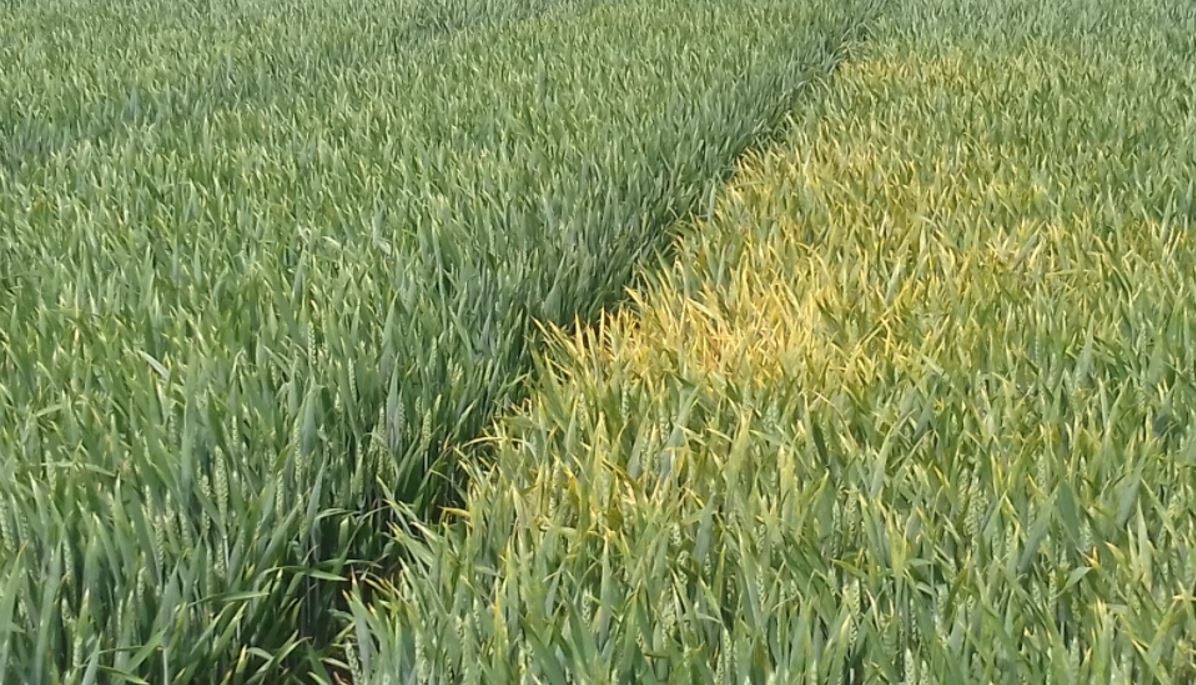- Home
- Knowledge library
- An introduction to disease resistance in cereals and oilseed rape
An introduction to disease resistance in cereals and oilseed rape
Varietal disease resistance is the foundation of control. Varieties that are more resistant allow greater flexibility in fungicide programmes – including the omission of sprays and the use of reduced doses, especially where disease pressure is low.
Cereal disease management homepage
Oilseed rape disease management homepage
The forms of varietal resistance
Broadly speaking, there are two forms of resistance – based on ‘minor’ and ‘major’ genes.
‘Minor’ genes
Race-non-specific/multigene resistance
- Individual minor genes provide a low level of resistance but can be combined to give moderate-to-high levels of resistance
- Usually, this type of resistance is durable and not subject to sudden failures
- This is the main type of resistance available against septoria tritici in wheat
‘Major’ genes
Race-specific/single gene resistance
- A major gene can provide a high level of resistance
- Usually*, this type of resistance is more susceptible to changes in pathogen populations
- In particular, new races/types of the fungus may result in a relatively sudden loss of varietal resistance
- When such a change occurs, varietal susceptibility depends on the underlying minor-gene resistance
- This is the main type of resistance available against yellow rust
Find out about our yellow rust watch list
*However, the strong mlo resistance to powdery mildew in spring barley and the moderate Pch1 resistance to eyespot in wheat have been durable for many years.
Winter wheat young-plant resistance to yellow rust
The pathogen that causes yellow rust comes in different forms, some only infect particular varieties. To add further complexity, some varieties are susceptible to yellow rust when plants are young, but go on to develop some level of resistance after early stem extension (the ‘adult-plant’ stage).
Learn about young-plant resistance
Disease management and varietal resistance
AHDB Recommended Lists (RL) trials are used to assess symptom expression in wheat, barley, oat and oilseed rape varieties across the UK.
In the RL, varietal disease resistance ratings are published on a 1–9 scale for several key diseases, where 1 indicates low resistance and 9 indicates high resistance.
As pathogen populations evolve, previously defeated genes may become effective again, so varietal disease ratings can go up, as well as down.
Modern cereal varieties with good levels of resistance often have little or no yield penalty. Some varieties provide exceptional disease-control packages. For example, in wheat, the untreated yield of some resistant varieties is just 5% lower, compared with fungicide-treated yields.
Such varietal resistance can be exploited to help reduce the intensity of fungicide programmes. Yield responses to fungicides, between the most- and the least-resistant varieties, can vary as much as 3 t/ha. A variety with a treated yield benefit of 0.5 t/ha will only justify having the value of 0.5 t/ha of grain spent on it.
Learn about fungicide programmes for cereals
Find out how RL disease ratings are calculated
About verticillium stem stripe and the approach to disease ratings
 AHDB
AHDB
Varietal resistance in pictures
These images show septoria tritici symptoms on winter wheat varieties with a range of disease ratings (rounded to the nearest whole number).
The winter wheat was drilled on 11 October 2022 at an RL trial site in Devon.
The pictures, which were taken on 13 June 2023, showed clear variety and fungicide interactions.
Septoria tritici disease pressure was relatively high in the 2022–23 growing season.
With fungicide (treated)
Without fungicide (untreated)
Disease rating 9
.JPG) AHDB
AHDB
.JPG) AHDB
AHDB
Disease rating 8
.JPG) AHDB
AHDB
.JPG) AHDB
AHDB
Disease rating 7
.JPG) AHDB
AHDB
.JPG) AHDB
AHDB
Disease rating 6
.JPG) AHDB
AHDB
.JPG) AHDB
AHDB
Disease rating 5
.JPG) AHDB
AHDB
.JPG) AHDB
AHDB
Variety selection tool
Our variety selection tool makes it easier to assess the merit of each variety, by taking into account the relative importance of each disease. The tool also provides a visual way to compare fungicide treatment benefits across varieties.
Access the variety selection tool
The use of varietal mixtures
Varietal mixtures increase genetic diversity within a field. This can slow or reduce the spread of some diseases, especially when varieties with different disease resistance profiles are grown.
Levels of disease reduction and yield increases depend on many factors, including disease and nutrient levels and the crop and varieties chosen. Although disease reductions of 60% and yield increases of 15% are possible, effects are not usually this large.
Crude mixtures, produced on the farm, work better than homogeneous mixing. More complex mixtures show greater disease reduction; a mixture of three or more varieties is best. Such mixtures may also reduce the risk of varietal resistance breakdown.
Differing maturity dates between the varieties in the mix do not tend to be an issue.
Both wheat and barley mixtures for feed and wheat for distilling are generally acceptable to markets. However, maltsters do not currently accept mixtures.

